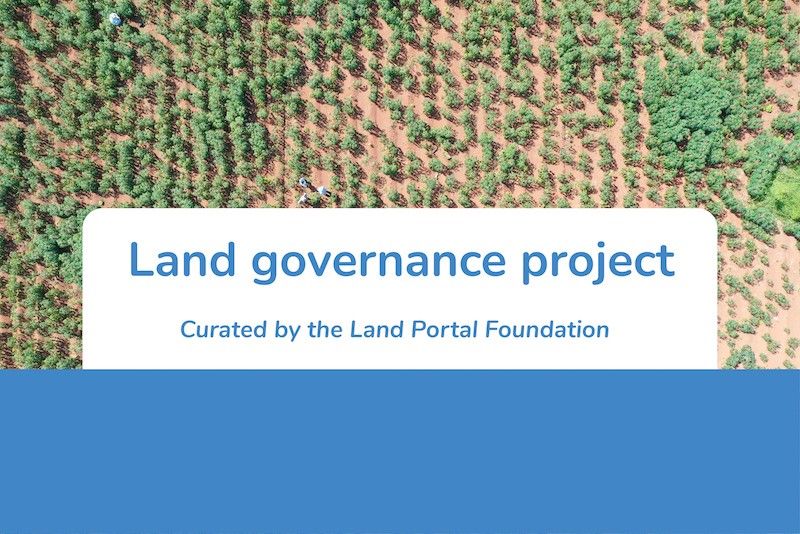Community / Land projects / Agtech for inclusion and sustainability: SP Ventures'Regional Fund (Agventures II)
Agtech for inclusion and sustainability: SP Ventures'Regional Fund (Agventures II)

€4361859.897
08/22 - 08/22
Concluído
This project is part of
Implementing Organisations
Donors
Data Providers
Objectives
Support the consolidation and scaling up of innovative Agtech early-stage companies (SMEs) that will develop technologies to offer productivity, market, and environmental solutions for the agricultural sector in Latin America especially to the Small and Medium Sized Farmers to generate environmental benefits related to climate change, land degradation, and chemicals and waste.
Other
Note: Disbursement data provided is cumulative and covers disbursement made by the project Agency.
Target Groups
?AgVentures II, as the first regional AgTech fund dedicated exclusively to Latin America, will capitalize on the proven experience and rich knowledge gathered by AgVentures I, which had a more specific geographic focus (Brazil and Argentina). As a regional vehicle, AgVentures is expected to have direct and indirect environmental, social and economic benefits for the region and its population. AgVentures’direct benefits include increased incomes, livelihoods, and productivity for vulnerable populations and executive positions for women in the region. Meanwhile, AgVentures will have even broader indirect effects by increasing employment opportunities and reducing the intensity of natural resource use. AgVentures primarily targets small and medium size farmers (SMSFs) both at the level of the farm and along agricultural value chains. It is estimated conservatively that about 55 to 73 thousand small and medium-sized farms (SMSFs) and 500 to 735 thousand people in vulnerable socioeconomic conditions in rural settings may benefit from the innovations introduced by startups financed by the Fund[1]. These AgTech innovations include recent advances in digital technologies (e.g. data analytics, big data, remote imagery and satellites, internet of things, artificial and augmented intelligence and blockchain), life sciences (e.g. advanced genomics, biotech) and automation (e.g. robotics, precise sensors). Agtech solutions have the potential to generate high impact to vulnerable rural populations and the environment both along the agricultural value chains, by introducing (low-carbon) solutions that enhance the access of SMSFs to markets, raise transparency and price conditions and, at the level of the farm, by improving livelihoods. The AgVentures II Fund also generates environmental benefits by investing in companies that help substitute and/or mitigate the use of harmful substances; and optimize food and equipment production and distribution, reducing natural resource consumption. The startups financed by the Fund will develop innovative solutions that decrease the intensity of use of natural resources in agricultural production (especially water, energy and land), enabling climate mitigation strategies in high carbon-intensive agriculture segments. Depending on the use of different technologies, companies invested by the Fund could also generate additional environmental/ climate benefits related to increasing climate resilience of SMSFs, including through water use conservation and optimization, and to reducing food waste. Additionally, SP Ventures has been a driving force of women entrepreneurship in agriculture. Having built a diverse portfolio, with 30% of women founders and 15% women founder CEOs (part of AgVentures I), the firm is a leader in this regard. For AgVentures II, SP Ventures is expected to continue applying a gender lens investment approach by identifying companies eligible for investment with more diverse teams, promoting the professional development of women in agtech and raising profiles of women entrepreneurs through widely disseminated media and events. As part of the result matrix agreed with the IDB Lab, the Fund aims to have, by the end of its Investment Period, 30% of its portfolio companies with at least one woman founder, co-founder or occupying C-level positions. Additionally, the Fund has 2 additional indicators related to beneficiaries/gender that once the Fund is in operations it would start reporting on a disaggregated basis by gender. These 2 indicators are: (a) number of people in rural areas estimated to benefit from Agtech solutions provided by portfolio companies (targets: by Year 4 = 84,000 people and by Year 10 = 735,000), and (b) Number of direct and indirect net jobs created by portfolio companies (targets: by Year 4 = 450 jobs, and by Year 10 = 1,050 jobs). Given the Fund’s investment focus, (the General Partner (also referred as Fund manager), has identified three main areas in which the technologies and/or companies part of the investment portfolio would have a direct or indirect environmental impact. Such areas are, but not limited to, the following: Chemicals and Waste § Reduced risks on human health and the environment through reducing and eliminating production, use and releases of Persistent Organic Pollutants and their waste; § Reduced risks on human health and the environment through sound management of chemicals and waste of global concern. Land Degradation § Improved provision of agro-ecosystem and forest ecosystem goods and services; § Mitigated/avoided greenhouse gas emissions and increased carbon sequestration in production landscapes; § Conservation and sustainable use of biodiversity in productive landscapes; Climate Change Mitigation § Mitigated GHG emissions; § Increased adoption of innovative technologies and management practices for GHG emission reduction and carbon sequestration; § Conservation and enhanced carbon stocks in agriculture, forest, and other land use; Additional Environmental Benefits In addition to the expected Global Environmental Benefits, described above, it is estimated that the Fund, as an AgTech investor, could have additional environmental benefits as indicated below. It is important to note that the project, adopting a conservative approach, has not set targets with respect to these benefits (as their generation very strongly depends on the exact Agtech solutions that will be supported by the AgVentures II), but will track these additional benefits during implementation of the project through its E&S monitoring tool. a) Climate Change - Technologies can help farmers adapt to climate change § Weather data and information technologies § Genetic technologies § Biological seed treatments and soil amendments § Indoor agriculture b) Water: Technologies focusing on conserving and optimizing the use of water § Water management technologies § Irrigation technologies c) Food Waste: Technologies that can help reduce, avoid or repurpose waste § Post-harvest technologies § Waste repurposing technologies d) Farmer Welfare and Smallholder Empowerment § Farm Management System § Content, Education and Social Media [1] These targets were incorporated in the Results Matrix. Such estimation followed conservative assumptions based on existing startups in the agtech segment and those previously invested by SP Ventures.




